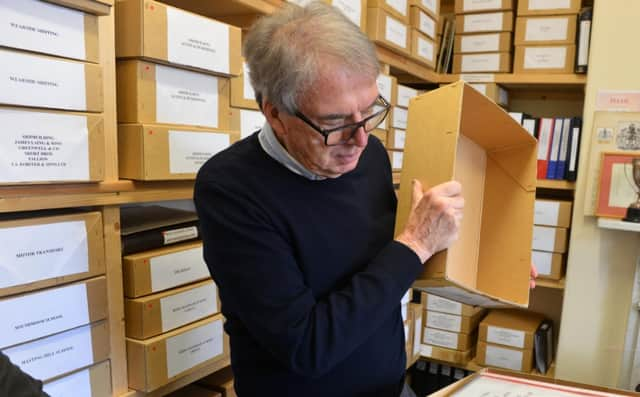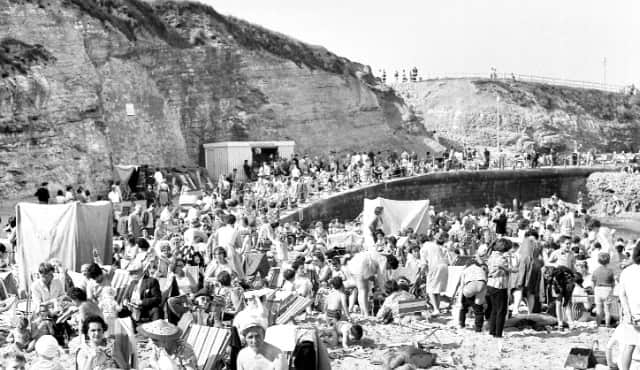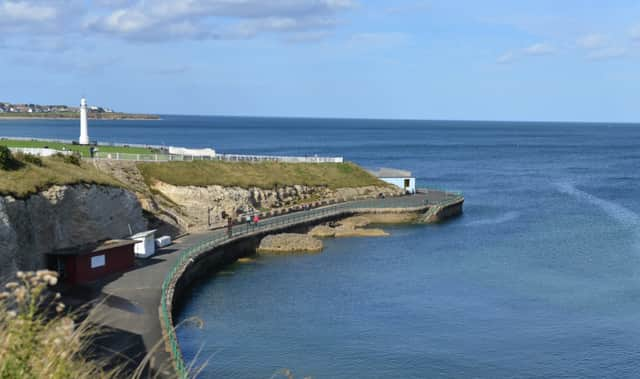Gruesome facts about Sunderland's Cat and Dog Steps at Roker
and live on Freeview channel 276
More gruesome details have been revealed on how the Cat and Dog Steps got their name.
Sunderland Antiquarian Society has shed more light on the steps' eerie past in its latest monthly newsletter.
Historian Philip Curtis reports.
Advertisement
Hide AdAdvertisement
Hide AdIt all came down to saving money - and 12 pence was the cost of having a dog disposed of back in the 1920s and 1930s.
2/6d to dispose of your beloved late pet
One method of having your pet removed was to get the council to do it.
Animal owners would take the cat or dog to the old police station in West Wear Street. You would then pay 2/6d - or 12 pence - to have the dog put to sleep.
Its body would be placed in a lime pit.
'To a lot of the population, this was considered a lot of money,' said Philip.
Advertisement
Hide AdAdvertisement
Hide Ad

The alternative was gruesome but cheaper
Instead, people would drown sick or unwanted pets by putting them in a sack and tying a weight to it before throwing it in the river.
Cats were thought to be most likely to face the barbaric method of disposal rather than the trip to West Wear Street.
Time and tide would do the rest.


'The theory of how the animal bodies turned up near the Cannonball Rocks is supposedly explained by the tides, moving river water and currents carrying flotsam and jetsam and bringing it ashore," said Philip.
The vast archives of Sunderland history
'Thankfully we have moved on in caring for our pets."
Philip added: "The lower promenade was only constructed in 1911 but it did not extend to the Cat and Dog Steps and was not completed until after the First World War.
Advertisement
Hide AdAdvertisement
Hide Ad"Until then, it stopped at the bend, a little further along where the toilets are now.


"At the time, the steps led down to a very small piece of concrete with a drainage hole.
"The promenade that we know today was not completed until 1922 when the concrete seating was also added.
Washed up on the beach
"At the time, most of the Cannonball Rocks were removed leaving just a small area of them.
Advertisement
Hide AdAdvertisement
Hide Ad"The area beside the steps and the Cannonball Rocks was where the bodies of the cats and dogs that had been deliberately drowned by their owners, were washed up on the beach."
Our thanks once again for another contribution from Sunderland Antiquarian Society.
The society, which was founded in 1900, holds extensive archives which were amassed and donated by the people of Sunderland.
To find out more, interested people should visit the Antiquarian Society’s Facebook page or its website which is at http://www.sunderland-antiquarians.org
Advertisement
Hide AdAdvertisement
Hide AdYou could also get along to its Heritage Centre which is open in Douro Terrace on Wednesdays and Saturdays from 9.30am to 12pm.
And to apply to become a member, email sunderlandantiquarians@yahoo.co.uk
Comment Guidelines
National World encourages reader discussion on our stories. User feedback, insights and back-and-forth exchanges add a rich layer of context to reporting. Please review our Community Guidelines before commenting.